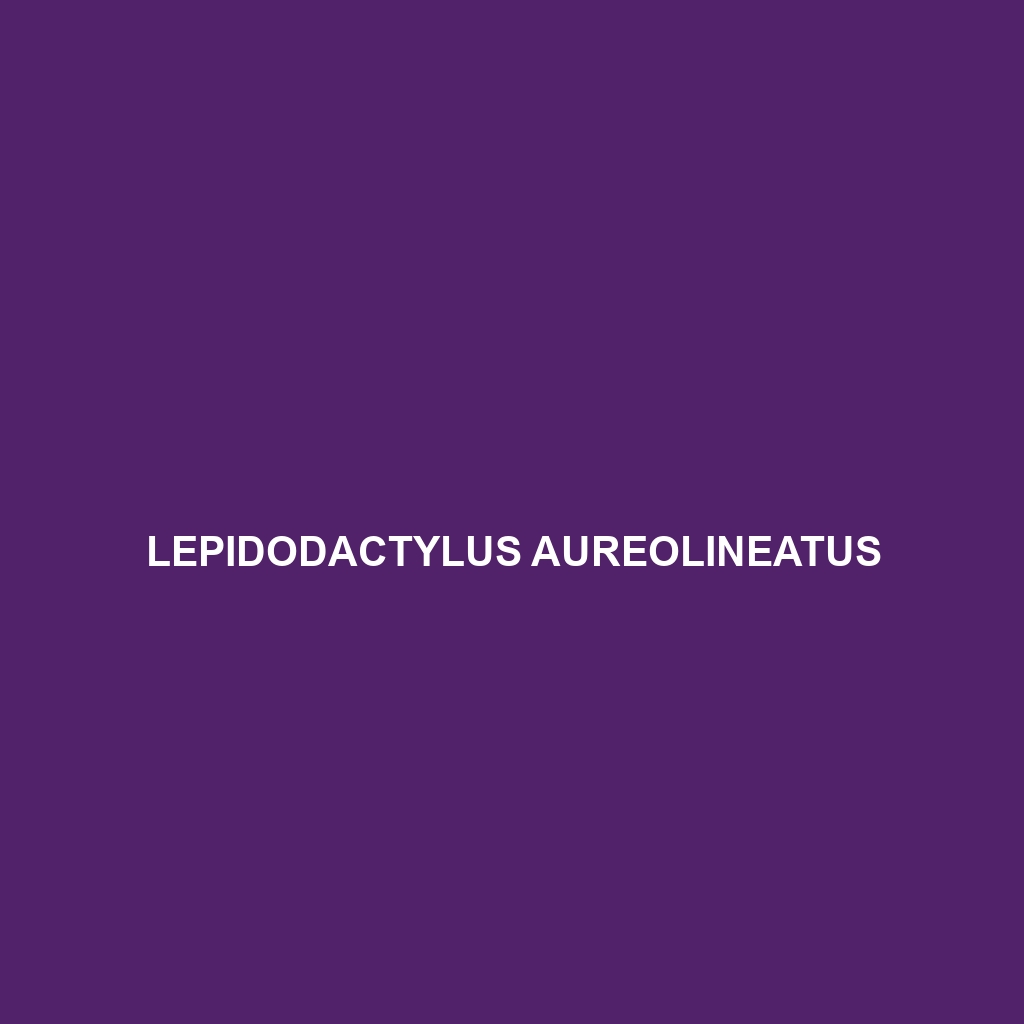Common Name
Lepidodactylus aureolineatus
Scientific Name
Lepidodactylus aureolineatus
Habitat
Lepidodactylus aureolineatus, commonly known as the golden-striped gecko, primarily inhabits the lush rainforests of the tropical regions in the southwestern Pacific, notably the islands of Vanuatu and New Caledonia. These unique habitats offer a humid climate with abundant vegetation, allowing the species to thrive. The gecko is often found in areas where dense foliage provides ideal cover for both hunting and shelter from predators. Additionally, Lepidodactylus aureolineatus can occasionally be observed in adjacent habitats such as coastal savannas and temperate forests, where they adapt to varying environmental conditions.
Physical Characteristics
Lepidodactylus aureolineatus have distinct physical features that make them easily recognizable. Adults typically reach lengths of about 10 to 15 centimeters, showcasing a slender, elongated body that is considerably agile. The coloration of this gecko is primarily brown or gray with striking yellow or golden stripes running longitudinally down the length of its back. This coloration not only serves as a means of camouflage against the bark of trees but also plays a crucial role in mating displays. The species possesses large, adhesive toe pads that enable it to navigate smooth surfaces and enhance its climbing ability, an essential trait for its arboreal lifestyle.
Behavior
This species exhibits primarily nocturnal behavior, emerging to hunt during the cooler evenings. Lepidodactylus aureolineatus is known for its solitary nature, although during mating seasons, males can be seen engaging in vocalizations and displays to attract females. Their social interactions are primarily limited to mating rituals, where elaborate courtship behaviors can be observed, including tail waving and body posturing. Interestingly, they are also known to exhibit some territorial behaviors, with males marking their domains through vocal calls and physical displays.
Diet
Lepidodactylus aureolineatus is an insectivore, primarily feeding on a variety of insects such as crickets, beetles, and moths. They have a strong proclivity for nocturnal hunting, utilizing their excellent night vision to locate prey in the dark. Their diet may be supplemented occasionally by small invertebrates, which adds to their nutritional intake. The gecko’s feeding habits are crucial for maintaining the ecosystem’s balance by controlling insect populations.
Reproduction
The reproductive cycle of Lepidodactylus aureolineatus is characterized by a seasonal mating period, typically occurring during the wet season, when food resources are abundant. After mating, the female lays a clutch of two to three eggs in a secluded location, often beneath fallen leaves or inside tree crevices. The incubation period lasts approximately six to eight weeks, depending on environmental conditions. The hatchlings are miniature versions of their parents and receive no parental care after hatching, immediately beginning their independent lives.
Conservation Status
Currently, Lepidodactylus aureolineatus is classified as a species of least concern according to the International Union for Conservation of Nature (IUCN). While the species is not currently facing immediate threats, habitat loss due to deforestation and environmental changes poses potential risks to their populations in the future. Conservation efforts are focused on habitat preservation and the monitoring of population trends to ensure their resilience against changing environmental conditions.
Interesting Facts
One of the most fascinating aspects of Lepidodactylus aureolineatus is its remarkable ability to regenerate its tail after losing it, an adaptation that serves as a survival mechanism against predators. Additionally, the color pattern of this gecko can vary significantly among individuals, showcasing varying shades of yellow and brown that help enhance camouflage in their native habitats. This variety makes them an intriguing subject for herpetologists and nature enthusiasts alike.
Role in Ecosystem
Lepidodactylus aureolineatus plays a vital ecological role as both a predator and prey in its environment. By helping to control the population of insects, these geckos contribute to the health of their habitat. Furthermore, they serve as a food source for larger predators, such as birds and snakes, thereby maintaining the balance within the food web. As a part of the biodiverse ecosystems of rainforests, they additionally contribute to the ecological richness of their habitats, affirming their importance in biodiversity conservation.
